Remarketing is the sleeping giant that more and more Brisbane businesses must awaken if they are serious about making money. Learn how easy it is to capitalise on the 75% of your website visitors—potential clients—who are warmed and primed to buy.
RETARGETING CAMPAIGNS EXPLAINED
You will hear people talk about remarketing an audience or even launching ‘retargeting campaigns’. These campaigns may include google remarketing display ads, creating landing pages for their social media, and even using video campaigns when remarketing to YouTube viewers.
All the industry talk and terms can sound confusing.
Worst still, it may sound all too hard.
Yet remarketing is far simpler than you think!
To understand “REMARKETING”, it’s important to understand what it actually is.
Most often you will hear people say: “Is it that thing where you Google ‘Flights to Bali’ and keep seeing ads for hotels in Bali, and flights to Bali, popping up everywhere from all the different websites I go to?”.
Or you might hear someone say, “I was looking for some shoes on a shoe website, and now those same shoes seem to be following me around the internet”.

That’s remarketing!
WHY REMARKETING AUDIENCES IS SO IMPORTANT
Traditionally, 96% of all traffic that goes to any website won’t buy or transact on the first visit. That’s a real LOST OPPORTUNITY for most businesses.
In sales and marketing, forever people have been saying:
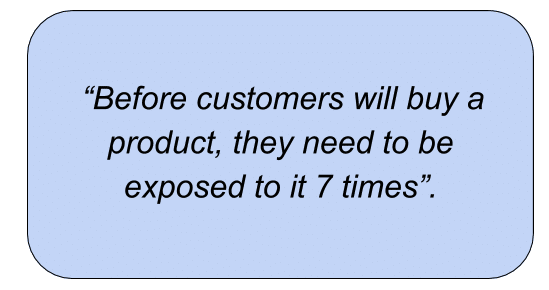
That’s as true today in a digital world as it used to be in the traditional marketing world.
The other thing that makes remarketing really valuable is that it allows you to reach a much wider audience than you are able to reach on your email marketing database or through pushing content on your Facebook page.
As an example, a lot of businesses might have:
- 1,000 Facebook followers
- 1,000 on their email marketing database.
Then we look into their Google Analytics account and we find that on their website, they’ve actually had 10,000 or 20,000 visitors a month come to their website, which is hundreds of thousands of visitors a year.

So the list of people who’ve been to your website is substantially larger than either your email list or your Facebook followers.
WHAT REMARKETING STRATEGIES ARE MOST EFFECTIVE?
Let’s take you through the 6 most effective remarketing strategies that there are in today’s market:
-
Google Display Remarketing
This is the one that most people are familiar with from a consumer perspective. It’s also known as Google Adwords Display Remarketing.
What does the display remarketing of Google Ads do? It’s when you go to a website and you start to see ads about that website—or about that product—on other websites around the internet.
What a lot of people don’t know is how those ads get there and how those banner ads appear on those websites.
Google makes a lot of its money from Google Adwords but also controls over 90% of ad inventory online outside of Facebook.
You may have seen an ad on couriermail.com.au
…or almost anywhere you have visited a site online.
Whenever you are looking at a banner ad, there’s a good chance that it was actually put there by Google or Google Display Remarketing.
-
Google Search Remarketing
This is a strategy that most people don’t know exists. This enables you to serve text ads in Google Adwords based on whether or not people have been to your website in the past.
For example, take a business-like BAMBRICK®. Let’s say someone has got to the website by googling the keywords such as ‘seo company brisbane’.
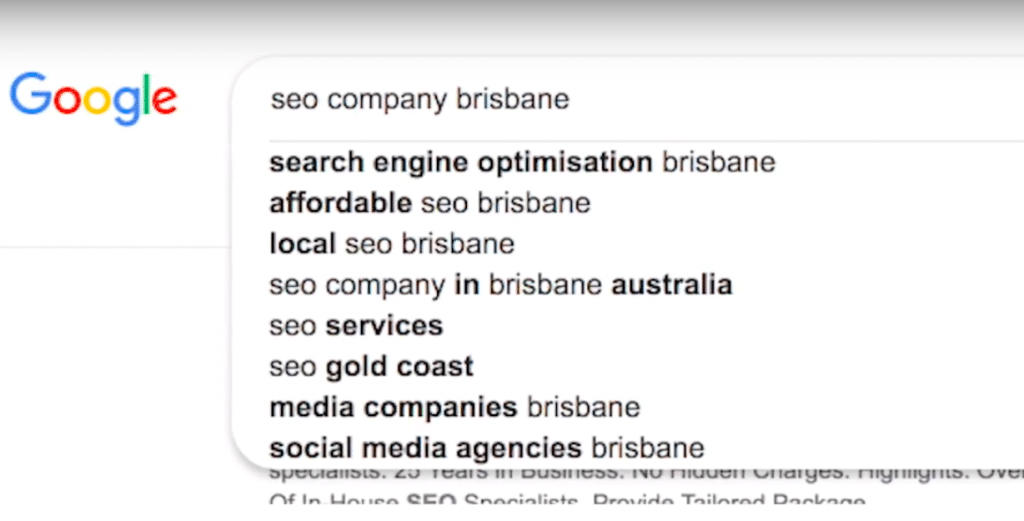
They arrive at the website based on those keywords, then leave it without transacting.
Then they might be googling another keyword, like ‘digital marketing agency’.
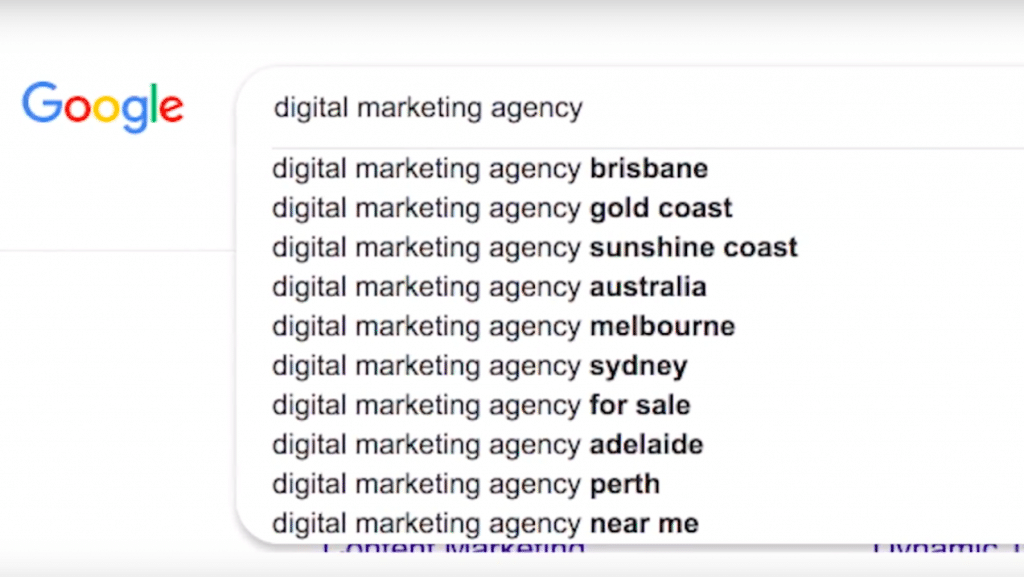
Now we create ads that are served in Google Adwords based on the fact that the user has already been to our website, saying, “Are You Looking For A Digital Marketing Agency In Brisbane That Specialises In SEO?”
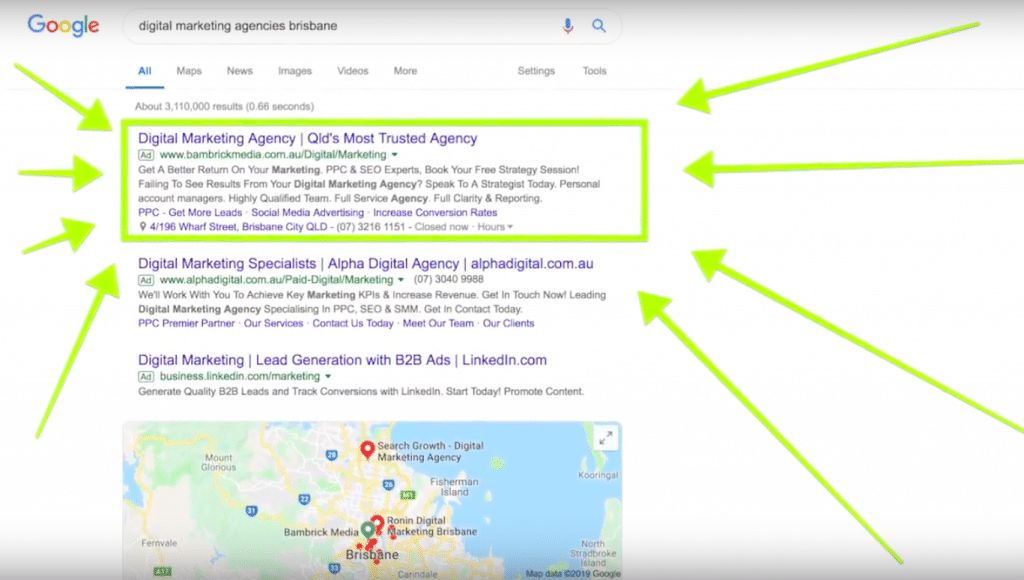
They can be retargeted based on that context and can show them a message that is really, really specific to what they are looking for.
-
Facebook and Instagram Remarketing
Both strategies can be talked about in one because Instagram is owned by Facebook. This means you can serve remarketing ads to both Facebook and Instagram audiences using the same platform.
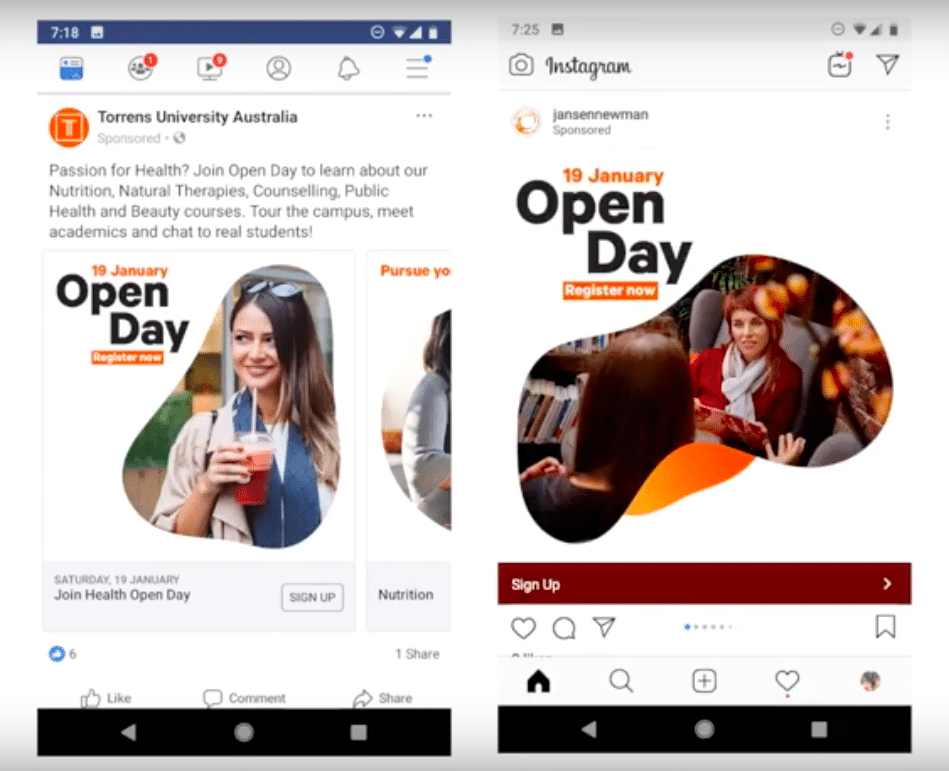
This works similarly to Google Display Remarketing, but obviously it would be serving ads to those people who have already been to your website when they are browsing on Facebook or Instagram.
-
Customer Match Remarketing
This is one of the most COST EFFECTIVE and PROFITABLE strategies that there is today.
Essentially, what it enables you to do is to take your current database of either existing or potential customers you have located through your regular marketing search campaigns. These are the leads and prospects who have bought before or inquired but didn’t end up buying.
You upload that list of contacts to either Google or Facebook and serve ads specific to that audience. In effect, you have created remarketing lists for searching buyers who have already shown interest in your product or service.
This is phenomenally profitable because if you think of the context of this audience, they are all people who have already enquired or done business with you in some way, shape, or form.
The likelihood that they are going to convert, and actually transact into a real sale based on seeing your remarketing ad is actually a lot higher than somebody who hasn’t inquired with you but might have just been to your website.
-
Ecommerce Remarketing
This only works if you have an e-commerce site, Magento eCommerce Platform, WordPress’s WooCommerce, or perhaps a Shopify eCommerce Solutions store.
This is where people have been viewing particular products on your website, or maybe they’ve added something to their cart but they haven’t yet checked out.
This enables you to remarket those specific products to the person who was looking for it, sometimes even at a discount. This can be done on Google, Facebook or Instagram. Here’s an example from Instagram:
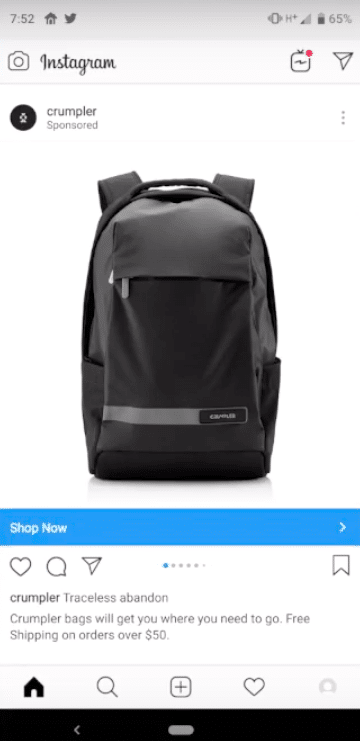
-
YouTube Remarketing
YouTube Remarketing and video campaigns don’t work for everybody.
- Firstly, if you don’t have any video or video ads content, it’s not going to help you too much.
- Secondly, if you have video content, as long as the videos on your website are served using YouTube, then you are going to be able to do YouTube Remarketing.
What is it?
After people have been to your website and they have watched a video of your products and services, they then leave your website.
When they visit YouTube—where they are doing more product research, or even just watching cat videos—you can serve those YouTube pre-roll ads, remembering that they are people who have already been to your website or interacted with some of your video content already.
For example, a funny cat video may show a pre-roll ad on a washing detergent solution you were looking for in your dishwasher.
Once you know how to set up YouTube remarketing with Google Ads, you are able to show personalised adverts to thousands upon thousands of people through remarketing to Youtube viewers using “video remarketing”
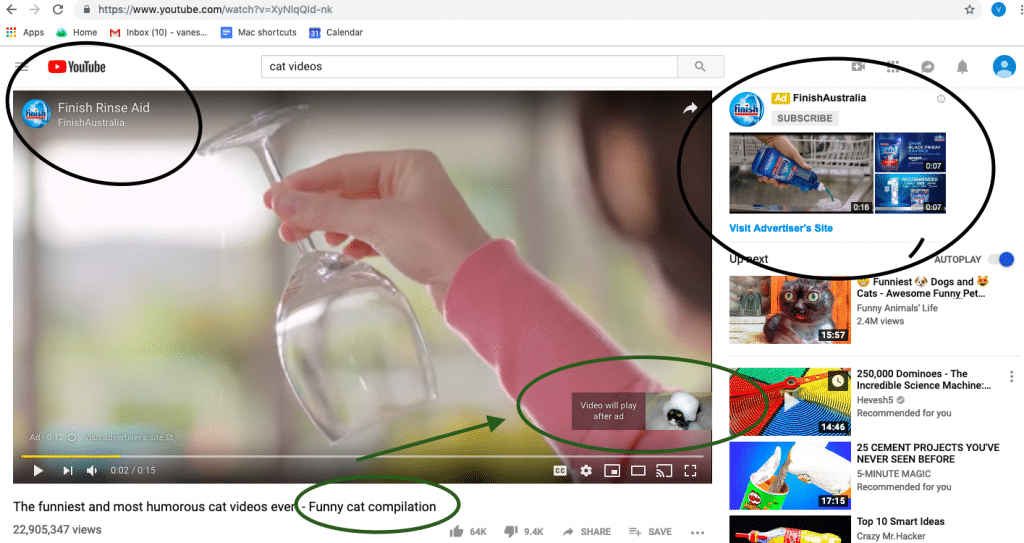
That’s 6 of the remarketing strategies that are out there that might be able to you.
6 WAYS REMARKETING CAN GENERATE PROFIT
Now, let’s list off 6 of the ways that you can use remarketing to generate more revenue, more sales, and more profit:
-
Build Brand Legitimacy
This helps our small business customers BUILD LEGITIMACY.
What is meant by that is that with remarketing, you can take a small budget (maybe even $200) and gain a sizable impact from a brand legitimacy perspective.
Brand Legitimacy?
Because you can serve your ads on sites like couriermail.com.au, gumtree.com.au, news.com.au, or other substantial websites, it’s common to see Google Remarketing Display Ads for a small business appear next to big businesses. This helps from a Brand Legitimacy perspective for those smaller businesses, boosting their importance and credibility.
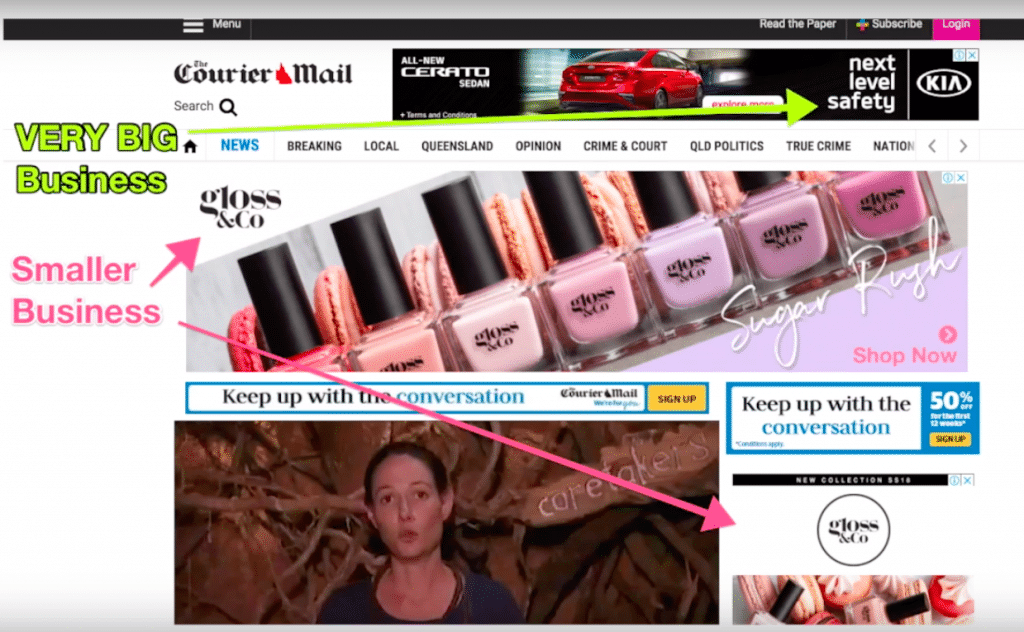
-
Differentiate Yourself
When people are going through the buying process, particularly when they are researching a buying decision that they’ve never had to make before, they are trying to evaluate between all the different suppliers to determine:

Maybe you:
- offer free shipping
- offer some sort of a guarantee
- have got a local team
- have a high level of quality, or
- have been doing it for longer.


Whatever it is, chances are that there is a good, COMPELLING reason as to why customers should choose you instead of choosing your competitors.
Remarketing is a really good way to reinforce that message so that customers know why they should buy from you instead of some of your competitors.
-
Upselling & Cross Selling
This is where the customer match in remarketing really comes into play.
Say you’ve got a list of people who’ve bought their first product from you. You might want to take that list of customers and upload it to any of the remarketing platforms, and actually sell your second product to that same audience.
The conversion rate on that audience is more likely to be really high because they’ve bought from you before.
-
Nurture Leads Through The Sales Funnel
This is specifically important when you’re dealing with a complex product or a product that’s got some sort of a long sales cycle involved.
If you’re selling a product with a large purchasing decision, where someone is investing a couple of hundred thousand dollars or more or it takes 6 to 12 months to buy, then chances are they are not going to hit your website, then ‘click here’ or ‘buy now’ on Day 1.
For example, if someone has seen your advertisement on social media, clicked to a landing page, and seen the offer; just like a website, they may not necessarily convert.
You can use remarketing to continue to educate your audience and nurture them through the sales pipeline.
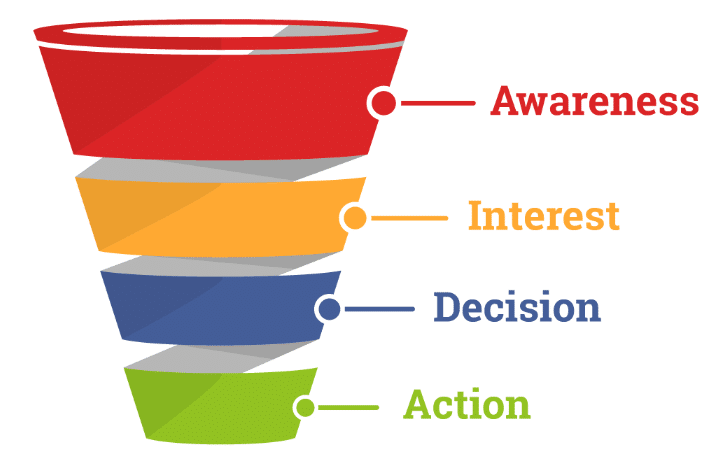
Remarketing gives them more and more reasons to buy from you, and more and more confidence and trust that you’re the right supplier so that when they are ready to pull the trigger, it’s you they end up buying from.
-
Seasonal Offers
A client in Brisbane is one of the largest and most iconic hospitality venues in town, and they use a seasonal remarketing campaign really well.
Being in the hospitality industry, they have Christmas functions, New Year’s functions and move right into Australia Day functions, and do this all throughout the year. They’ve got Mother’s Day, Father’s Day, Easter, and ANZAC Day—all different events that they are going to want to advertise.

Every time they’ve got a new campaign or a seasonal event, they use remarketing to target their next product, and their next product, and their next product, all to that same audience.
-
Supplement Your Email Marketing List Or Social Following
Traditionally when you look at somebody’s email marketing list or their Facebook and Instagram followers, regardless of the size of the list, they are always just a tiny fraction of the volume of people who visit your website on an annual basis.
Let’s say a website gets 10,000 visitors a month x 12 months of the year.

That’s 120,000 people who they could be remarketing and getting their message out to.
Yes, if you’ve got something to say, a product to sell, an event to push, definitely put it on your Facebook page, boost the post, advertise it through Facebook, and send it out via email marketing to everyone on your list.
What about remarketing? What about all those people who have been to your site over the past 12 months?
If they’ve already been to your website, then chances are that they are interested in your products and services in some way. Using remarketing, you access all those people as well, and possibly get a lot of conversions that you wouldn’t have got elsewhere if you only focused on social and email marketing.
HOW DOES IT WORK?
1. Setup The Campaign In The Platform – That’s either through Facebook or through Google.
2. Generate A Pixel – That’s a small piece of code that you will need to put on your website to connect with Google or Facebook or Youtube remarketing pixels. These help to start to build that list of people to remarket to.
3. Populate The List – After the pixel is on your website, you need to give it a little bit of time for your website visitors to be added to that remarketing list.
NOTE: Depending on how much traffic your site gets depends on how long it will take to populate that list. If you are on a low traffic site, then it might take a few days or even weeks, but if you are on a high traffic site, your list might be populated within a couple of hours.
4. Build The Creative – Once the list is populated, you need to build the creative. That means build whatever ads you are going to need to serve on the platform. You’ll actually create the banners that you want to show to people on Facebook, Instagram, Google Display or write the text ads for Google Search.

5. Build The Campaign – Go into Google or Facebook to set up all the settings, telling them when you want to show these ads, who do you want to show them to.
Obviously you want to show them to the list of people who have been to our website but maybe you don’t want to show it to all of them because the product or service isn’t relevant to all those people.

Maybe you only want to show it to all the men who went to the website, or all the women, or maybe you want to show these ads at night, or in the morning, or on a weekend whenever that might be.
In short, once you have built out the CREATIVE, and we’re BUILDING THE LIST, you need to BUILD THE CAMPAIGN, which means you have set up all the TARGETING SETTINGS to make sure that the CAMPAIGN IS PROFITABLE.
FREQUENTLY ASKED QUESTIONS
1 WHAT IS REMARKETING IN GOOGLE ANALYTICS?
To really know if your campaigns are working, you need to measure and monitor them. In the digital marketing world, Google Analytics is an important tool used to track the activity on a website.
It looks at the session duration, how many pages viewed per visit, the bounce rate, etc. This is matched with information about the traffic’s source, i.e. mobile app, display ads, Google AdWords, Facebook, etc.
Google Analytics recognises 4 types of tracking remarketing:
- When a first-time visitor to your website phone you, a download, buys, or opts in to use one of your services (a conversion)
- When the user is shown a personalised ad and it lures them back to the website, which results in a conversion.
- When a user deletes their browser cookies and Google Analytics can’t tell if they are a new user
When a user to your website ends up buying from your competitor
2 HOW MUCH SHOULD I SPEND?
How much to spend is an open-ended question but there is a rule of thumb.
Approximately 10% of the total media spend for the campaign is a good allocation to put toward remarketing.
That way you still have 90% of the budget to drive cold traffic (to tell people about it for the first time) and 10% of the budget is advertising to warm traffic or reminding people about it or marketing people who have already been to your website.
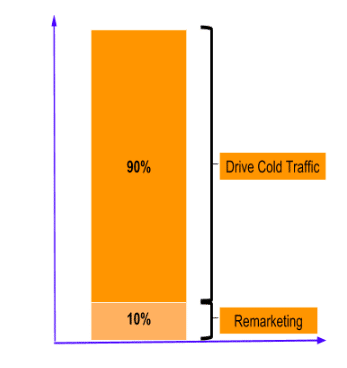
From experience, that’s a good split:
- 90% on cold traffic
- 10% on warm traffic (being that remarketing component).
If that 10% on return on investment is good, and you get lots of conversions, maybe you’ll want to do more: Maybe 20% or 30% of the budget goes to remarketing.
If you’re not getting a return on your investment through remarketing, then we’d advise you to change it or cut it. You don’t ever want to do anything that is not generating a return on investment.
What remarketing opportunities could your business be earning more from? Drop Bambrick Media a note or contact a strategist here.